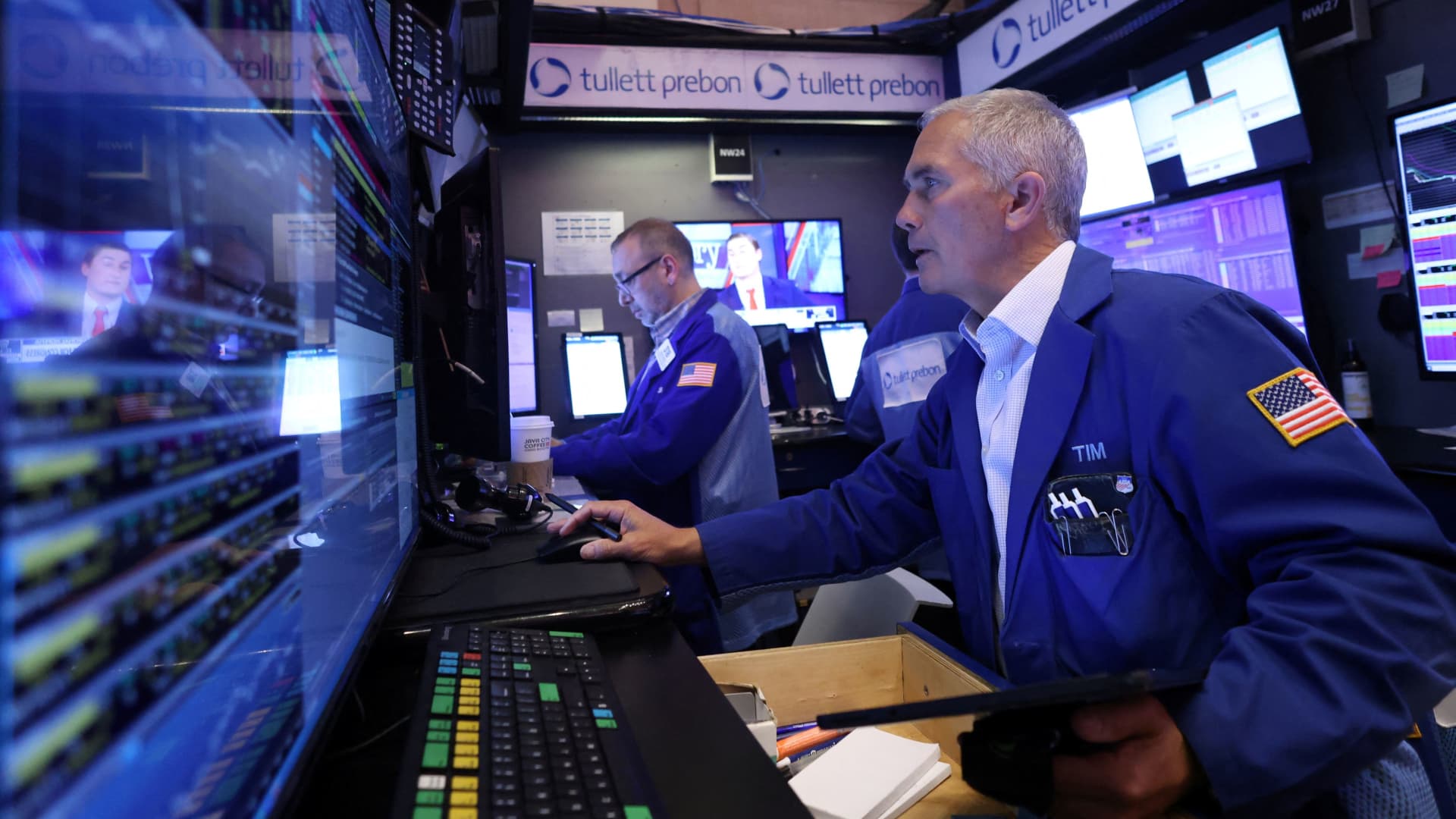Treasury yields were about flat Thursday as traders parsed through new U.S. inflation data in search of clues on when the Federal Reserve may start cutting interest rates.
The 10-year Treasury yield inched up by just 1 basis point at 4.57%. The 2-year Treasury yield was last at 4.948% after falling by 2 basis points.
Yields and prices have an inverted relationship and one basis point equals 0.01%.
The March producer price index, which tracks prices on a wholesale level, came in less than expected. PPI rose by 0.2% for the month, lower than the 0.3% increase anticipated by economists surveyed by Dow Jones. Core PPI, which excludes volatile food and energy prices, gained 0.2% last month, in line with the consensus estimate.
The data muddied the inflation picture. While the softer PPI report provided some relief for investors worried about sticky inflation, it comes one day after a hotter-than-expected March consumer inflation report spurred fears that the Fed will keep interest rates elevated.
“Thursday’s weaker-than-expected PPI suggests that inflation data is inherently inconsistent,” said George Ball, chairman at Sanders Morris. “While it’s encouraging to see a weaker inflation print, the Federal Reserve will take its time when it comes to rate cuts and the data is still on the side of waiting.”
Treasury yields on Wednesday spiked following the CPI data. The 2-year and 10-year Treasurys climbed as much as 22 and 18 basis points, respectively.
Markets are now pricing in the start of rate cuts in September, rather than in June, according to the CME Group’s FedWatch tool.
— CNBC’s Alex Harring contributed to this report.
Correction: The March consumer inflation report was released Wednesday. An earlier version misstated the day.

